HP Elite Folio (3G2N3EA) review: Too much style, not enough substance
A leather-bound, ARM-powered convertible that doesn’t live up to the hype
-
+
Great looks
-
+
Versatile, sturdy design
-
+
Excellent keyboard
-
+
Superb battery life
-
-
Disappointing processor
-
-
Missing features
-
-
Other displays are better
-
-
Rivals are slimmer and lighter

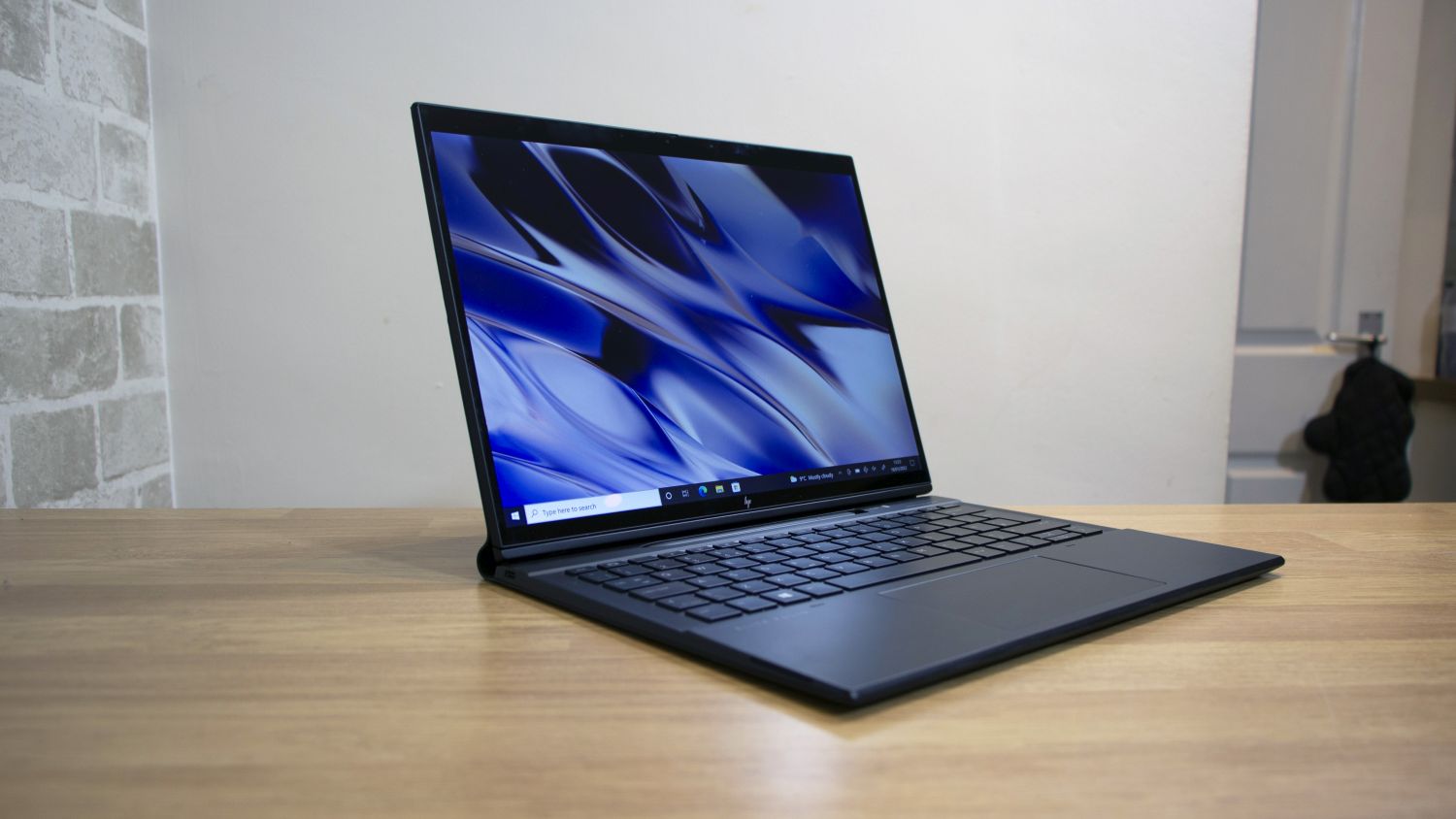
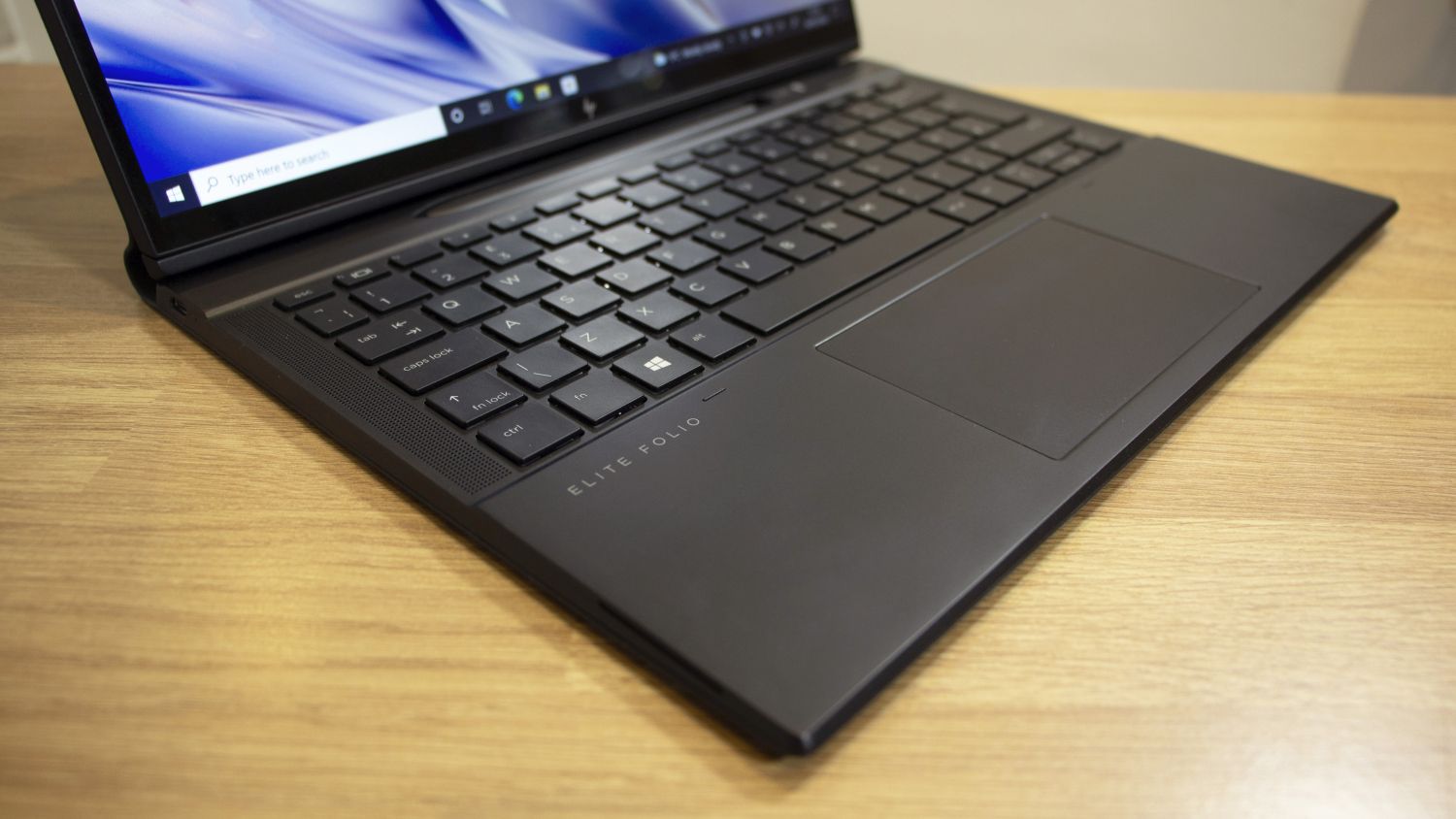

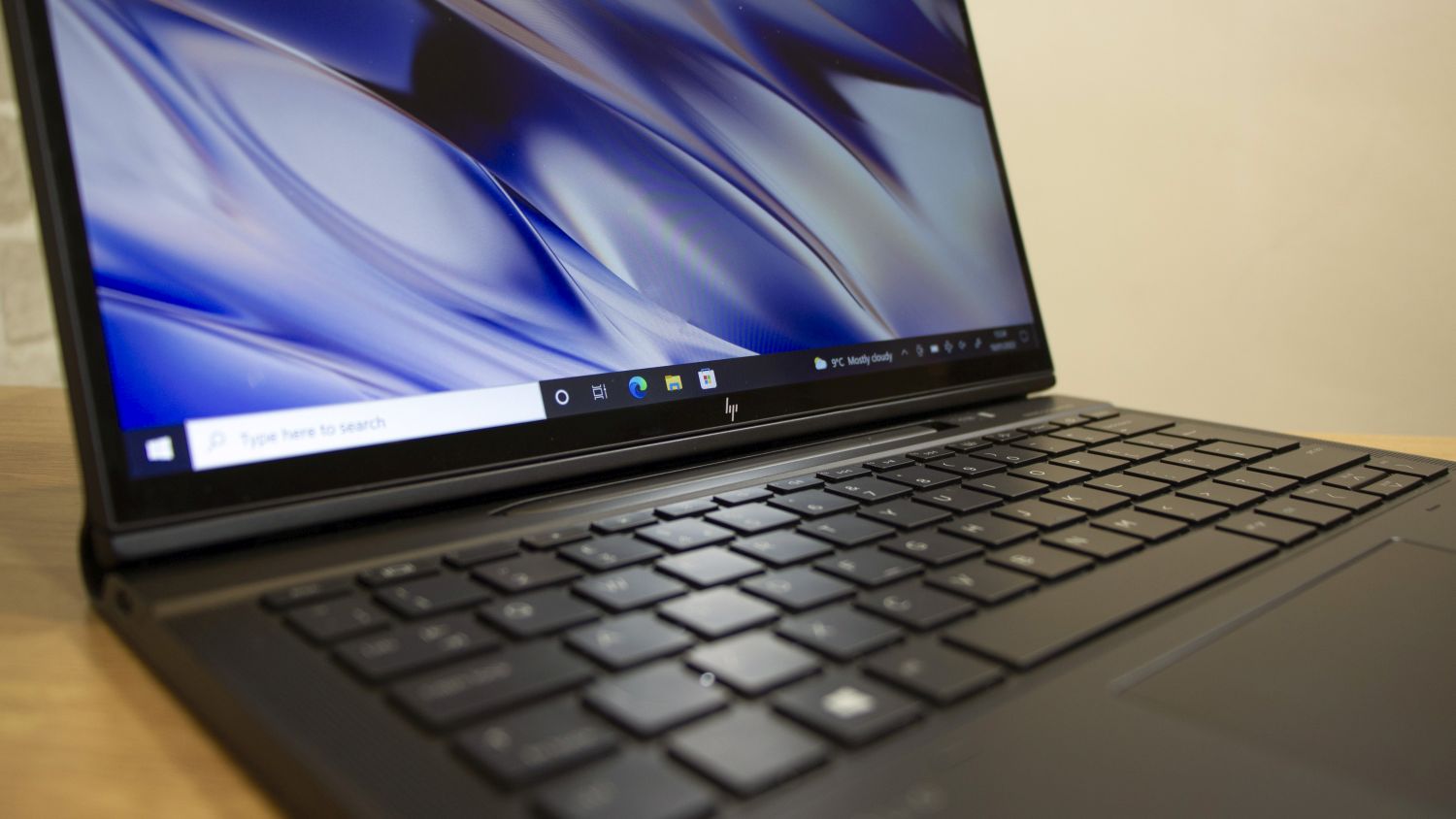


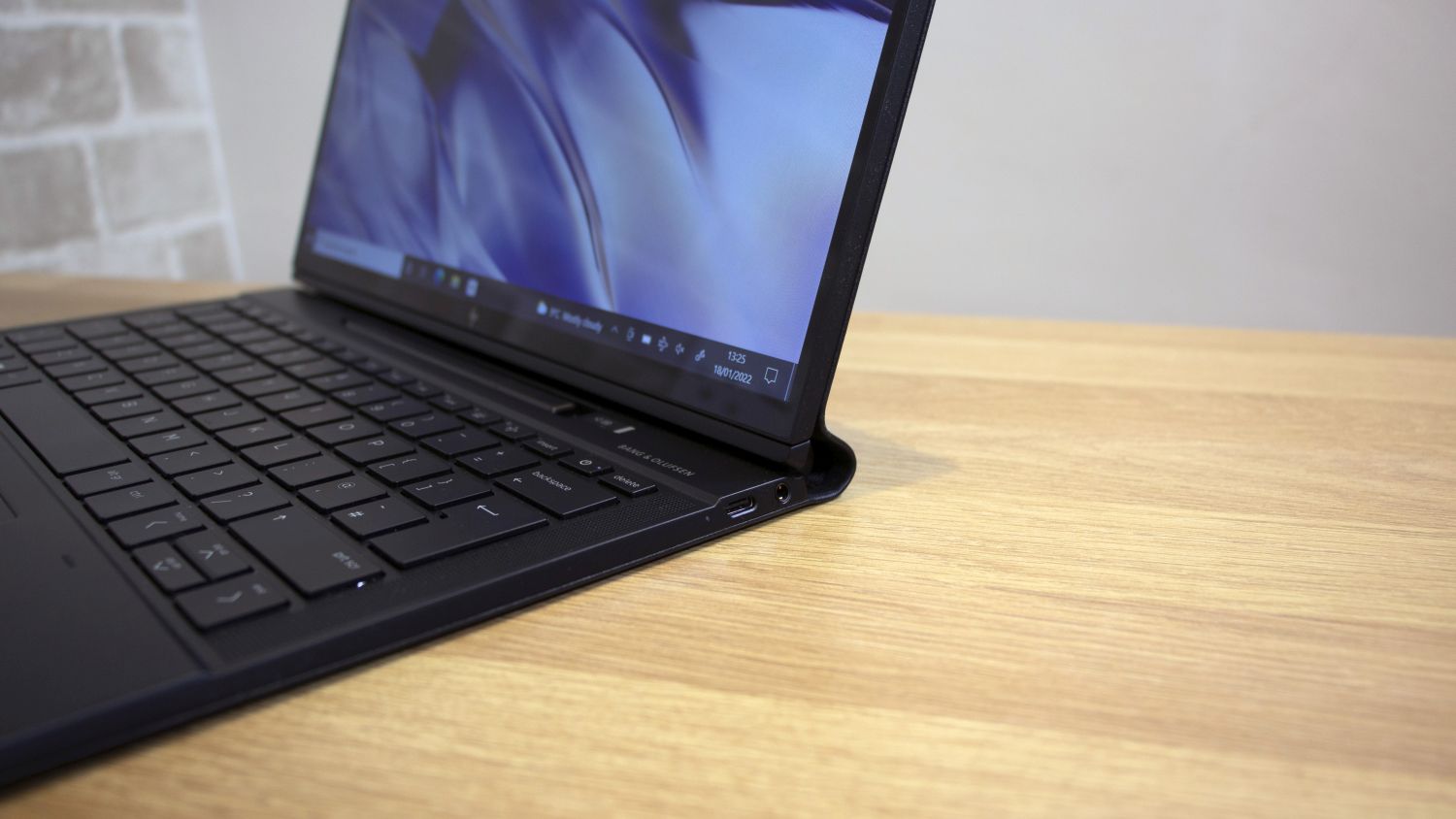
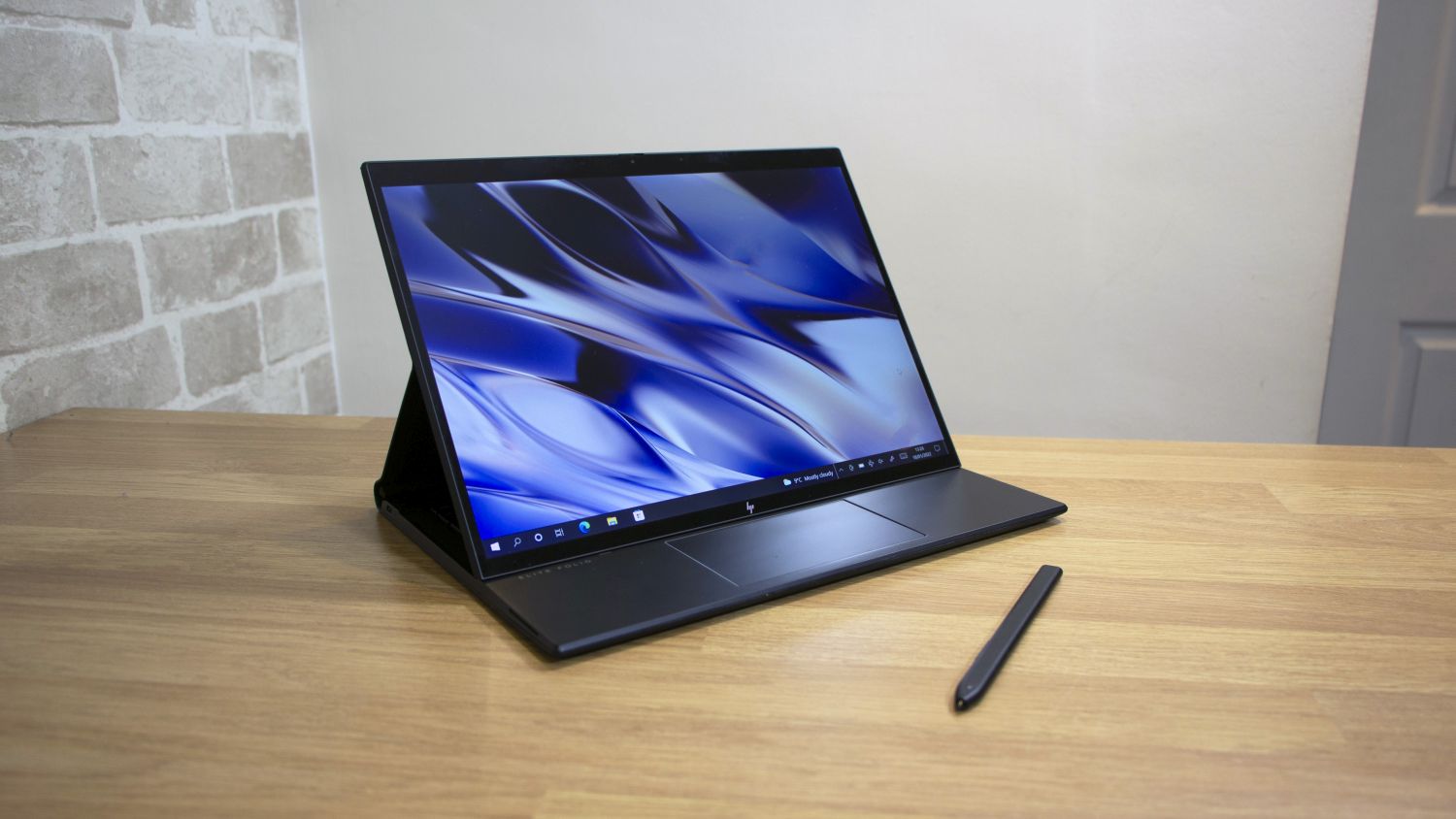

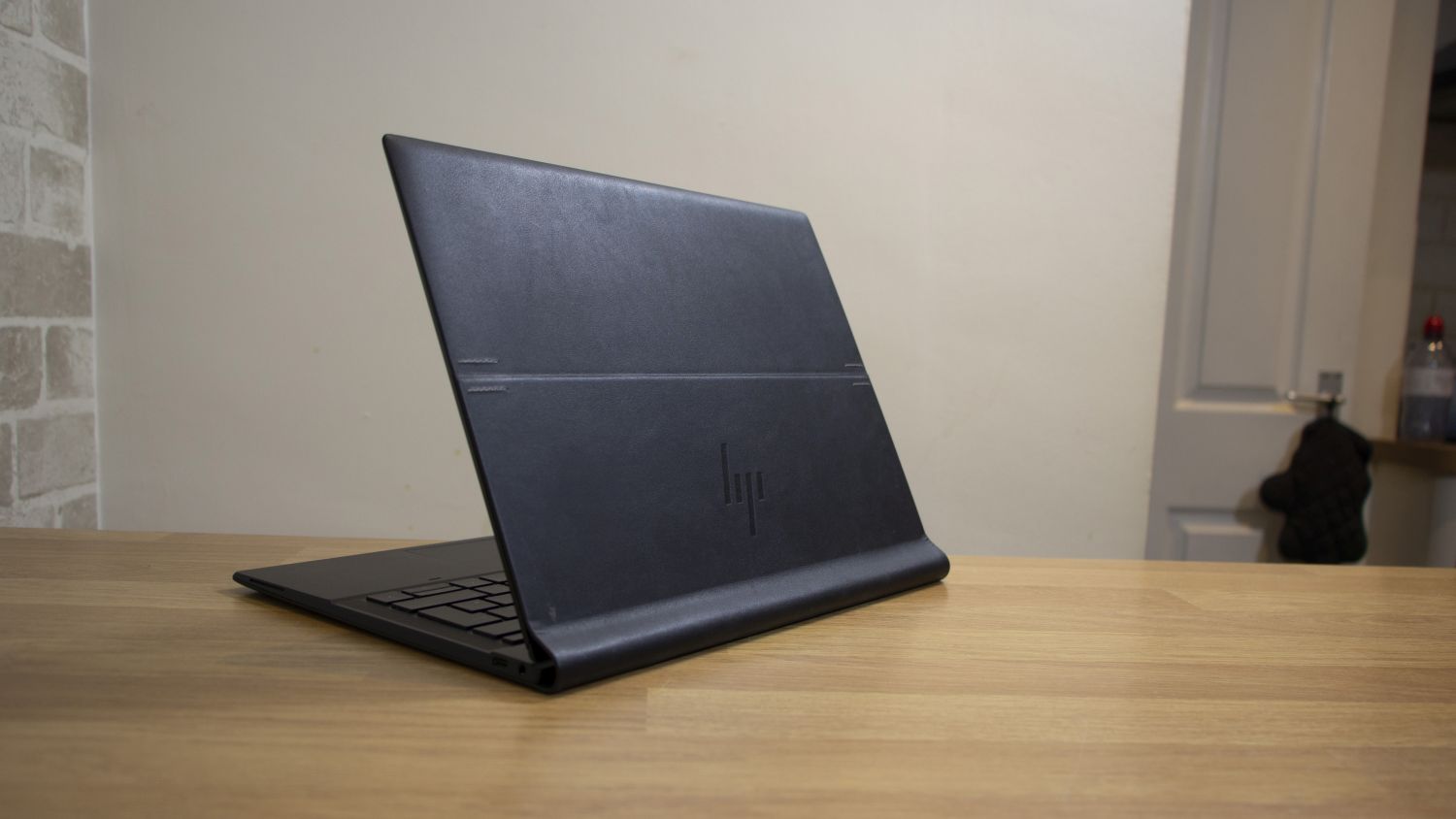
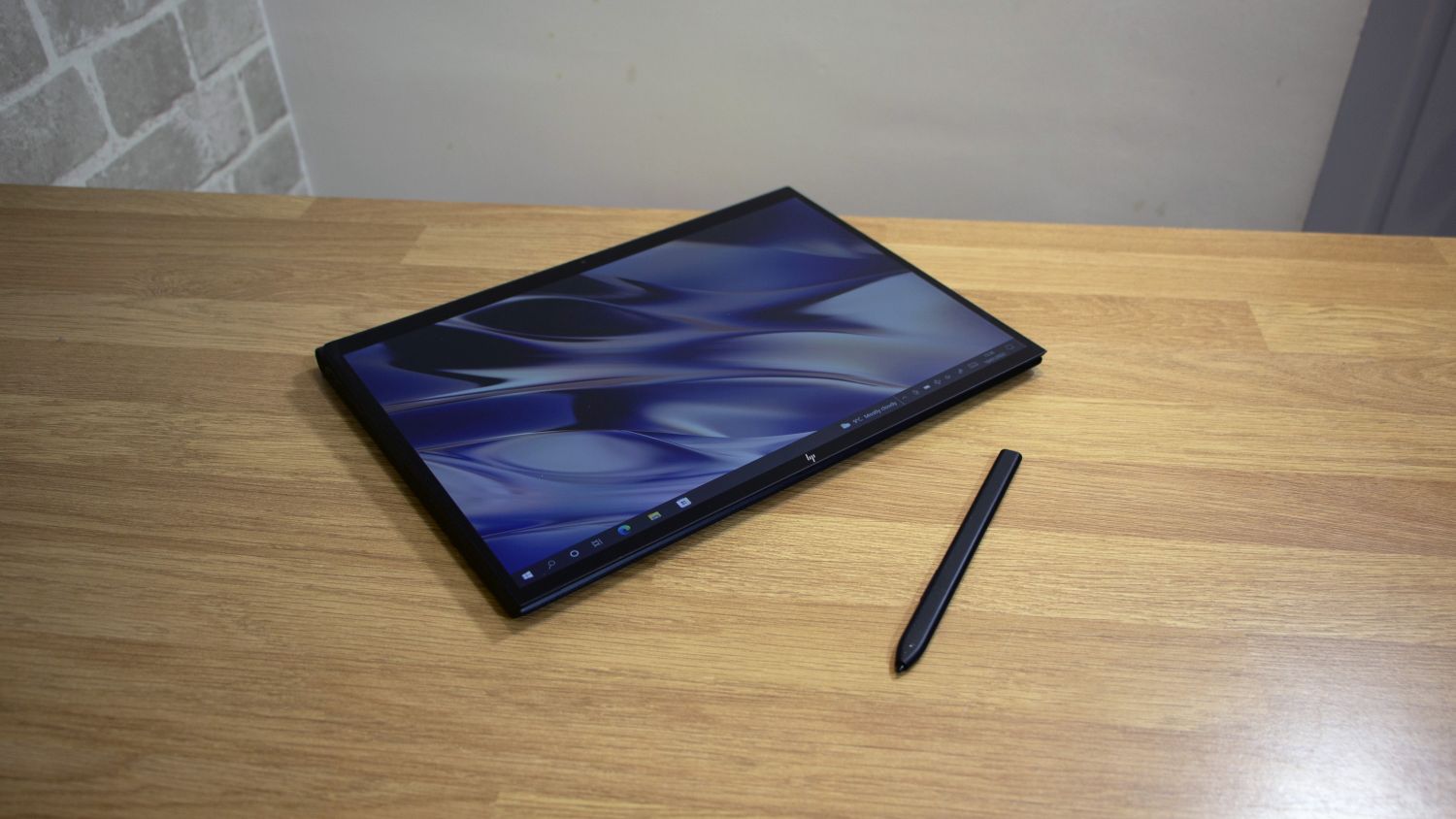
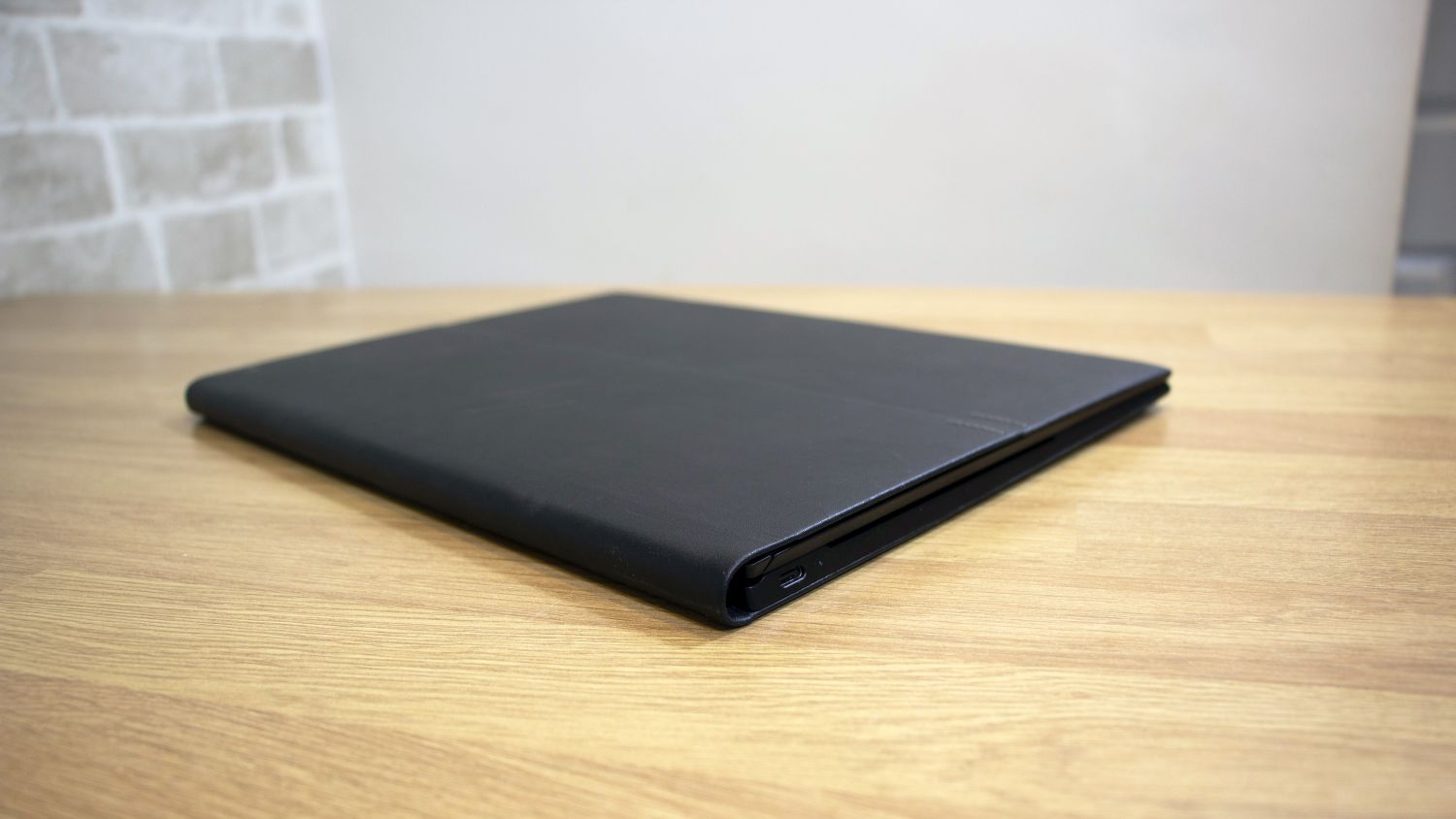

The HP Elite Folio lives up to its name in two major ways. It’s certainly an elite experience thanks to its high-end design, and its vegan leather exterior evokes a particularly elegant book. This machine looks classier than its £1,082 exc VAT price suggests. It’s interesting on the inside, too, because the Folio has abandoned Intel and deployed Snapdragon silicon instead.
It’s a bold laptop, but it faces fierce competition. If you want to experiment with other ARM-based devices, there’s the Microsoft Surface Pro X and Samsung Galaxy Book S. If you’d prefer to stick with Intel, consider the Dell Latitude 7320. And if you’re happy to ditch Windows, there’s the Apple MacBook Pro 13.
HP Elite Folio review: Design
The Folio’s exterior is coated with vegan leather – essentially polyurethane – and it makes the Folio look more opulent than any competitor. It’s a tactic HP has used previously with the similarly-named HP Spectre Folio 13, and it was just as impressive there. The lid has an embossed HP logo, and the interior uses recycled magnesium. The screen has slim bezels, and the included stylus slots into a neat charging channel above the keyboard.
HP’s machine has smart movement options to match its slick looks, too. The screen has an additional hinge so it can pitch forward and magnetically attach in front of the keyboard. It sits like an easel and is intended for creative work. The Folio also rotates smoothly into tablet and tent modes, and build quality is consistently great.
It’s a good start and the HP offers more movement than any rival, but the Folio does have some minor design issues. Moving the notebook into its easel position requires too much force, and there’s no notch or lip that makes opening the device easier.

The HP weighs 1.32kg and it’s 16mm thick, so it’s lighter than the MacBook Pro, but it does look a bit chunky when stacked up against other devices: the Samsung weighs 961g and is 12mm thick, for instance.
Head over to the convertibles and the HP doesn’t fare well, either - the Microsoft Surface Pro X weighs 1.1kg and is 12.3mm thick when connected to the heavier of its two keyboards, while the Dell Latitude 7320 has near-identical dimensions. Both of those have detachable displays, too.
Sign up today and you will receive a free copy of our Future Focus 2025 report - the leading guidance on AI, cybersecurity and other IT challenges as per 700+ senior executives
HP Elite Folio review: Keyboard and trackpad
The lack of a removable keyboard may make the HP thicker and heavier than some rivals, but the conventional laptop form factor also means the HP has a sturdier keyboard.
It’s an excellent bit of kit. The buttons have a decent 1.3mm of travel, and they’re fast and crisp – and HP has balanced that crispness with a pleasing bounce. It makes the buttons feel light, breezy, and so comfortable that you’ll have no problem typing for hours. The Folio’s keyboard is also extremely quiet, so you won’t disturb your co-workers.
This keyboard is better than the shallow Dell and Samsung typing units, and it’s just as satisfying as the hardware installed on the Surface and MacBook devices.

Sadly, the excellent keyboard sits above a middling trackpad. Its surface is fine, but the buttons push down a bit too far, and they’re a tad slow. This pad isn’t bad, but it could be better.
HP Elite Folio review: Display
Thankfully, there’s no such issues with the display. The Folio’s 13.5in panel has a 3:2 aspect ratio and a resolution of 1,920 x 1,280. That ratio matches Microsoft and Dell’s machines, and the squarer shape means you’ve got more vertical space for browsing documents and websites.
On top of this, the IPS touchscreen has great quality levels. Its brightness of 414cd/m2 is easily high enough to handle strong office lights and outdoor environments, and the black point of 0.16cd/m2 is fantastic. The resulting contrast ratio of 2,588:1 is brilliant, and means the screen delivers lashings of vibrancy and depth. The panel’s Delta E of 1.82 is equally solid, the colour temperature of 6,440K is top-notch, and the panel rendered a creditable 93.4% of the sRGB colour gamut.
For mainstream content-creation work and workloads the HP’s panel excels - it’s bold, punchy and can easily cope with any everyday task. The Dell is a bit brighter, but that doesn’t make a significant difference in real-world use. The Surface and Apple machines have higher resolutions, but you’ll only need crisper images if you want to tackle tougher creative tasks.
HP Elite Folio review: Hardware and performance
Unlike most of HP’s machines, this laptop uses the Snapdragon 8xc Gen 2 SoC; an eight-core part with a peak boost clock of 3GHz. The model on test also has 8GB of LPDDR4 memory and a 256GB SSD alongside a mid-range Adreno 540 graphics chip.

Don’t expect rapid performance. In Geekbench’s single- and multi-core benchmarks, the Gen2 chip scored 755 and 3,021. Those results are only marginally quicker than the older ARM-based chips inside the Microsoft and Samsung devices. The Core i5 chips used in the Dell and elsewhere, meanwhile, are noticeably quicker, and Apple’s M1 processors are faster still and will soon be superseded by even better versions
For everyday office tasks, web-browsing and undemanding creative work, the Snapdragon chip is fine. But if you need a laptop to handle tougher editing tools, strenuous multi-tasking, or huge databases, this isn’t the machine for you. Indeed, we had no issues running ordinary tasks on the Folio, but we noticed occasional stuttering with several apps running or loads of browser tabs opened.
As with other ARM-based devices, 32-bit applications run using emulation, but 64-bit apps aren’t yet supported and some apps don’t have 32-bit versions. This won’t cause a problem for most users – most software runs well on this laptop - but if you want to use creative apps, or older utilities, it’s worth checking that they’ll be compatible before you invest in this notebook.
This ARM-based laptop fought back a lot harder in the battery benchmark, however. In our 170cd/m2 video playback test, the Folio lasted for a mammoth 17hrs 50mins. That’s twice as good as most rivals and even three hours beyond the long-lasting Dell. You’ll easily make it through a full day, even if you run tougher productivity software.
HP Elite Folio review: Ports and features
HP’s Snapdragon hardware might not be fast, but it does support 4G and 5G LTE alongside dual-band Wi-Fi 6 and Bluetooth 5. If you want a model with 5G support, though, you’ll have to opt for the version with 16GB of memory and a 512GB SSD – and that costs £1,279 exc VAT.

Elsewhere, the Folio’s feature set looks a trifle bare. Each side has a USB-C port that supports power delivery and DisplayPort, but they top out at a modest 5Gbps and one of them powers the device itself.
The 720p webcam has a privacy shutter and supports Windows Hello, but the speakers are tinny and distorted at peak volume, so use the headphone jack or Bluetooth connection to deploy better audio gear instead. The Folio omits a fingerprint reader and card slot altogether.
This paucity of ports and features isn’t surprising on a slim, light convertible, but the Folio doesn’t even stack up to rivals here. The Surface and Dell both have faster USB or Thunderbolt ports and 1080p webcams, and the Samsung has a fingerprint reader and microSD card slot. Apple’s machine has Thunderbolt 4, and other laptops offer full-size USB ports, HDMI outputs and card readers in similarly small form factors.
HP Elite Folio review: Verdict
The HP Elite Folio looks fantastic thanks to its vegan leather shell, and it impresses in other departments: its keyboard and battery life are both superb, its display is accurate and expansive, and it’s got all of that convertible movement.
In too many areas, though, it doesn’t stack up. The ARM-based internals are fine for normal work, but faster rivals are easy to find. The screen is beaten elsewhere, HP’s machine is thicker and heavier than several competitors, and it has a meagre feature set.
This laptop looks the part, but it doesn’t have the function to match its form. Unless you want a laptop with more style than substance, you’d be better off elsewhere.
HP Elite Folio Specifications
| Processor | 3GHz octa-core Snapdragon 8cx Gen2 SoC |
| RAM | 8GB LPDDR4 |
| Graphics | Adreno 540 |
| Storage | 256GB SSD |
| Display | 13.5in 1,920 x 1,280 touch IPS |
| Operating system | Windows 10 Pro 64-bit |
| Connectivity | Dual-band 802.11ax WiFi, Bluetooth 5 |
| Ports | 2 x USB 3.2 Gen 1 Type-C/Power delivery/DisplayPort, 1 x audio |
| Dimensions | 297 x 229 x 16mm (WxDxH) |
| Weight | 1.32kg |
| Warranty | 1yr RTB |
Mike Jennings has worked as a technology journalist for more than a decade and has been fascinated by computers since childhood, when he spent far too long building terrible websites. He loves desktop PCs, components, laptops and anything to do with the latest hardware.
Mike worked as a staff writer at PC Pro magazine in London for seven years, and during that time wrote for a variety of other tech titles, including Custom PC, Micro Mart and Computer Shopper. Since 2013, he’s been a freelance tech writer, and writes regularly for titles like Wired, TechRadar, Stuff, TechSpot, IT Pro, TrustedReviews and TechAdvisor. He still loves tech and covers everything from the latest business hardware and software to high-end gaming gear, and you’ll find him on plenty of sites writing reviews, features and guides on a vast range of topics.
You can email Mike at mike@mike-jennings.net, or find him on Twitter at @mikejjennings
-
 Trump's AI executive order could leave US in a 'regulatory vacuum'
Trump's AI executive order could leave US in a 'regulatory vacuum'News Citing a "patchwork of 50 different regulatory regimes" and "ideological bias", President Trump wants rules to be set at a federal level
By Emma Woollacott Published
-
 Microsoft Excel is still alive and kicking at 40 – and it's surging in popularity as 82% of finance professionals report ‘emotional attachment’ to the spreadsheet software
Microsoft Excel is still alive and kicking at 40 – and it's surging in popularity as 82% of finance professionals report ‘emotional attachment’ to the spreadsheet softwareNews A recent survey found Gen Z and Millennial finance professionals have a strong “emotional attachment” to Microsoft Excel
By Emma Woollacott Published
-
 LastPass hit with ICO fine after 2022 data breach exposed 1.6 million users – here’s how the incident unfolded
LastPass hit with ICO fine after 2022 data breach exposed 1.6 million users – here’s how the incident unfoldedNews The impact of the LastPass breach was felt by customers as late as December 2024
By Emma Woollacott Published
